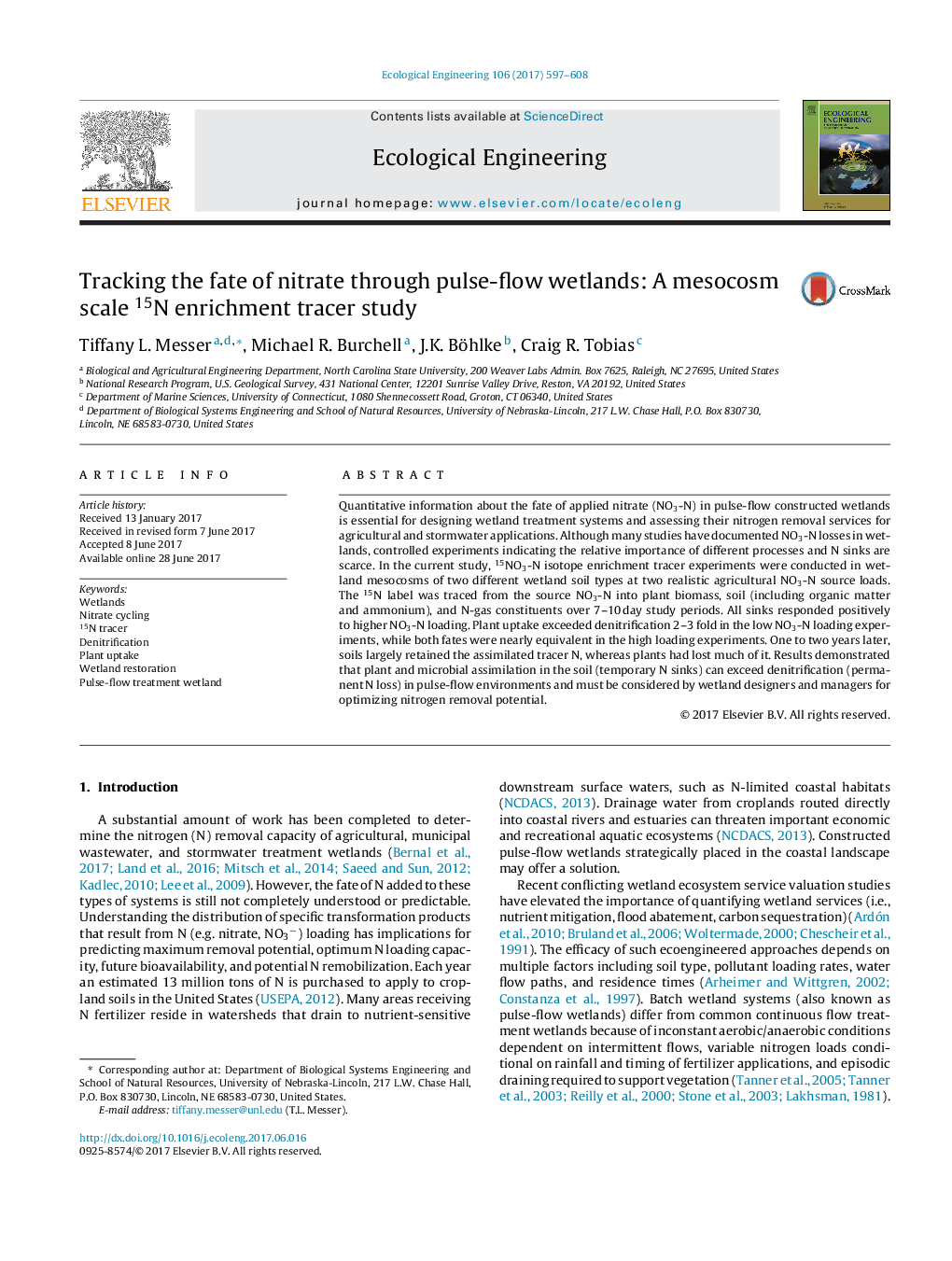| Article ID | Journal | Published Year | Pages | File Type |
|---|---|---|---|---|
| 5743878 | Ecological Engineering | 2017 | 12 Pages |
â¢The importance of nitrate transformations in pulse-flow wetlands were investigated.â¢Isotopes revealed subequal wetland nitrate sinks (plants, soils, denitrification).â¢Nitrate loading and soil N availability affected N transformation pathways.â¢Long-term N storage was greater in soils than plants.
Quantitative information about the fate of applied nitrate (NO3-N) in pulse-flow constructed wetlands is essential for designing wetland treatment systems and assessing their nitrogen removal services for agricultural and stormwater applications. Although many studies have documented NO3-N losses in wetlands, controlled experiments indicating the relative importance of different processes and N sinks are scarce. In the current study, 15NO3-N isotope enrichment tracer experiments were conducted in wetland mesocosms of two different wetland soil types at two realistic agricultural NO3-N source loads. The 15N label was traced from the source NO3-N into plant biomass, soil (including organic matter and ammonium), and N-gas constituents over 7-10 day study periods. All sinks responded positively to higher NO3-N loading. Plant uptake exceeded denitrification 2-3 fold in the low NO3-N loading experiments, while both fates were nearly equivalent in the high loading experiments. One to two years later, soils largely retained the assimilated tracer N, whereas plants had lost much of it. Results demonstrated that plant and microbial assimilation in the soil (temporary N sinks) can exceed denitrification (permanent N loss) in pulse-flow environments and must be considered by wetland designers and managers for optimizing nitrogen removal potential.
Graphical abstractDownload high-res image (103KB)Download full-size image
